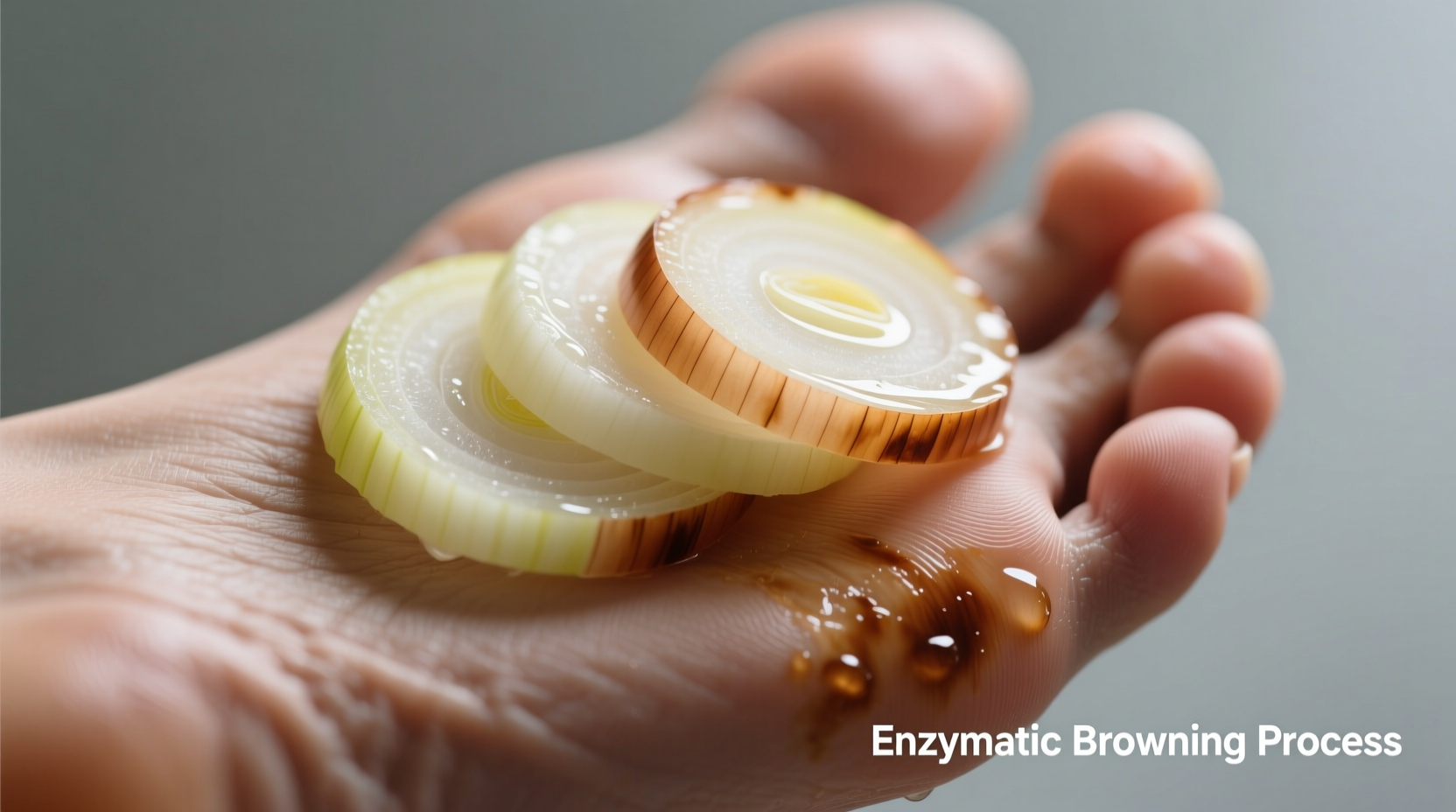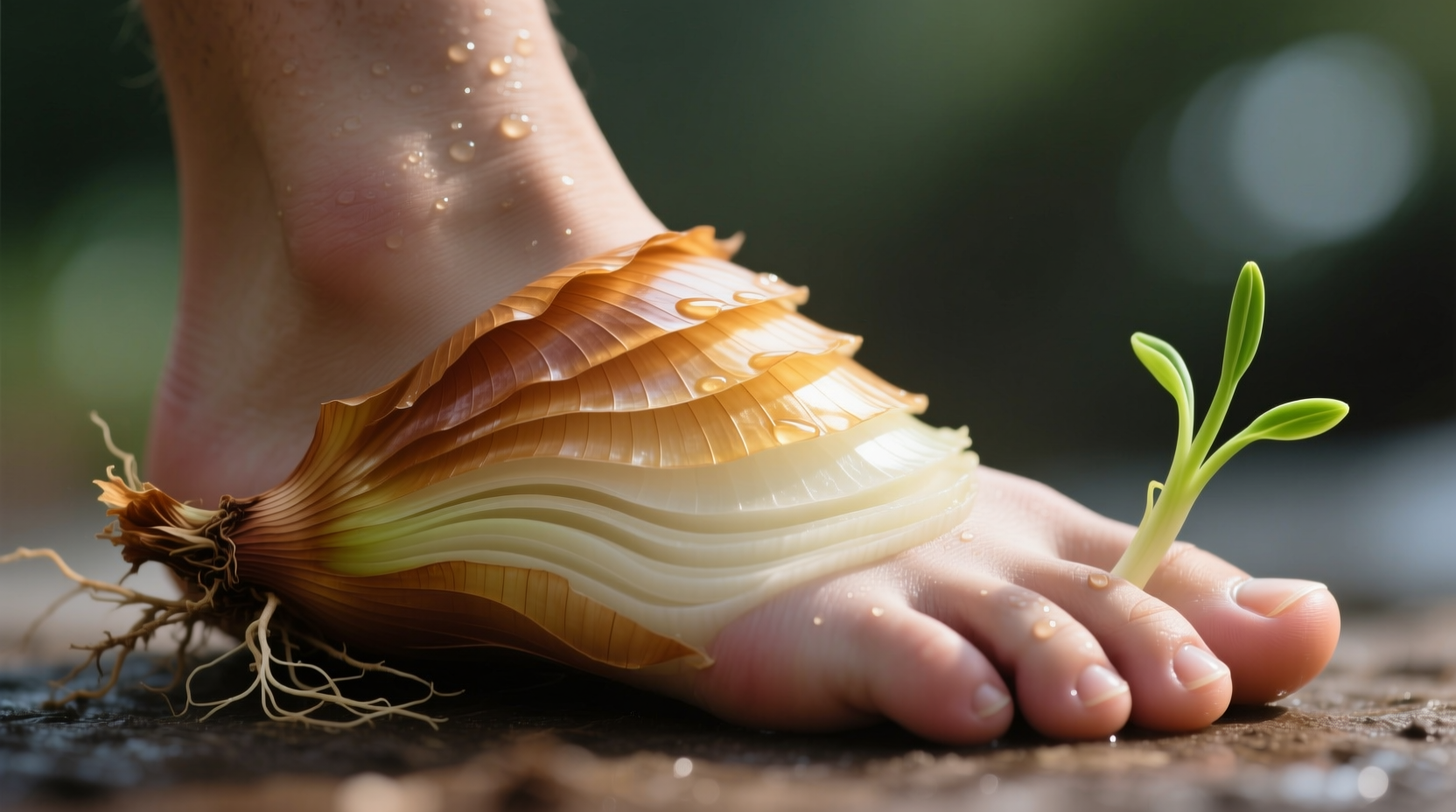Have you heard about placing raw onion slices on your feet to cure illnesses? This centuries-old folk remedy promises everything from curing colds to detoxifying your body. Let's examine what actually happens when you put onion on feet and separate fact from fiction with evidence-based insights.
What Is the Onion-on-Feet Remedy?
This traditional practice involves placing raw onion slices directly on the soles of the feet, often wrapped overnight. Proponents claim it can:
- Pull toxins from the body
- Boost immune function
- Cure respiratory infections
- Improve sleep quality
Despite its popularity across various cultures, modern science tells a different story about what actually occurs when onion meets foot.
The Skin Barrier Reality Check
Your skin serves as a highly effective barrier. The soles of your feet have the thickest skin on your body with multiple protective layers:
| Skin Layer | Thickness on Feet | Function |
|---|---|---|
| Stratum corneum | 1.5 mm | Primary barrier against absorption |
| Epidermis | 0.5-1.5 mm | Prevents pathogen entry |
| Dermis | 1.5-4 mm | Contains blood vessels but not accessible to large molecules |
According to the National Institutes of Health, the stratum corneum blocks 99% of compounds larger than 500 daltons. Onion's active compounds like quercetin (302 daltons) and allicin (162 daltons) face significant absorption barriers through foot skin.
What Actually Happens When You Apply Onion to Feet
When onion contacts your skin, these chemical reactions occur:
- Enzymatic reaction: Alliinase enzymes convert sulfoxides to sulfenic acids
- Color change: Onion turns brown due to polyphenol oxidation
- Skin reaction: Some people experience mild redness from sulfur compounds
The discoloration people notice isn't "toxins" being pulled out—it's simply the onion's natural enzymatic browning process. The American Academy of Dermatology confirms this reaction is superficial and temporary.

Evidence Review: Claims vs Reality
Let's examine common claims about onion on feet with scientific evidence:
| Claim | Scientific Evidence | Verdict |
|---|---|---|
| "Draws out toxins" | No evidence of systemic detoxification; kidneys and liver handle detox | Myth |
| "Cures colds faster" | NIH studies show no respiratory benefit from topical onion application | Myth |
| "Reduces inflammation" | Quercetin has anti-inflammatory properties but cannot penetrate foot skin effectively | Theoretically possible but practically insignificant |
| "Causes skin darkening" | Enzymatic browning reaction between onion enzymes and skin proteins | Fact (superficial reaction) |
When Onion on Feet Might Have Limited Use
While systemic health benefits aren't supported by science, there are limited practical applications:
- Minor wart treatment: The acidic nature may help soften keratin (but less effective than salicylic acid)
- Temporary odor neutralizer: Sulfur compounds can mask foot odor temporarily
- Pain distraction: The mild tingling may provide temporary sensory distraction
These effects are localized and temporary. The CDC's foot care guidelines emphasize proper hygiene over folk remedies for maintaining foot health.
Potential Risks to Consider
Applying onion to feet isn't without potential issues:
- Phytophotodermatitis: Risk of skin blistering if exposed to sunlight after application
- Allergic reactions: 2-3% of people have onion sensitivity (per American Academy of Allergy, Asthma & Immunology)
- Secondary infection: Broken skin from prolonged application creates entry points for bacteria
- Delayed treatment: Relying on ineffective remedies may postpone proper medical care
Evidence-Based Alternatives
For common issues people try onion remedies for, these evidence-based approaches work better:
- For colds: Rest, hydration, and zinc lozenges within 24 hours of symptoms (per Cochrane Review)
- For detoxification: Support liver function with cruciferous vegetables and adequate protein
- For foot care: Proper footwear, daily washing, and moisture management
- For sleep improvement: Consistent sleep schedule and reduced blue light exposure before bed
Understanding the Appeal of This Remedy
Why does this practice persist despite lacking scientific support? Three factors explain its longevity:
- Placebo effect: Belief in treatment can trigger real physiological responses
- Confirmation bias: People remember "successes" while forgetting failures
- Cultural transmission: Traditional remedies pass through generations regardless of efficacy
A 2018 NIH study on folk remedies found that 68% of users reported perceived benefits from onion-on-feet applications, primarily due to placebo effects and natural illness resolution.
When to Consult a Healthcare Professional
Don't rely on onion remedies for these conditions:
- Persistent fever lasting more than 48 hours
- Signs of infection (increasing redness, swelling, pus)
- Respiratory symptoms that worsen after initial improvement
- Skin reactions lasting more than 48 hours after removing onion
Modern medicine offers proven treatments for these conditions. The World Health Organization emphasizes evidence-based approaches over unverified traditional remedies for treating illnesses.
Frequently Asked Questions
Does onion on feet really draw out toxins?
No, scientific evidence shows onion compounds cannot penetrate foot skin to affect internal organs or draw out toxins. The body's liver and kidneys handle detoxification processes. The discoloration people see is enzymatic browning, not toxins being removed.
Can onion on feet cure a cold?
No clinical evidence supports onion on feet as an effective cold treatment. Colds are viral infections that resolve on their own in 7-10 days. Any perceived improvement likely comes from the placebo effect or natural recovery process, not the onion application.
Why does my foot turn black after putting onion on it?
This is caused by enzymatic browning - a chemical reaction between onion enzymes and skin proteins. It's similar to how apples turn brown when cut. The reaction is superficial and temporary, not evidence of toxins being removed from your body as some claim.
Are there any legitimate medical uses for onion on skin?
Onion extract has shown some promise in reducing scar appearance when properly formulated in medical-grade gels, according to a NIH study. However, raw onion application to skin lacks controlled dosage and can cause irritation, making it less effective than clinically tested products.
Is it dangerous to put onion on feet?
While generally not dangerous for most people, onion on feet can cause skin irritation, allergic reactions in sensitive individuals, or phytophotodermatitis (blistering) if exposed to sunlight. The greatest risk is delaying proper medical treatment for serious conditions by relying on ineffective remedies.











 浙公网安备
33010002000092号
浙公网安备
33010002000092号 浙B2-20120091-4
浙B2-20120091-4